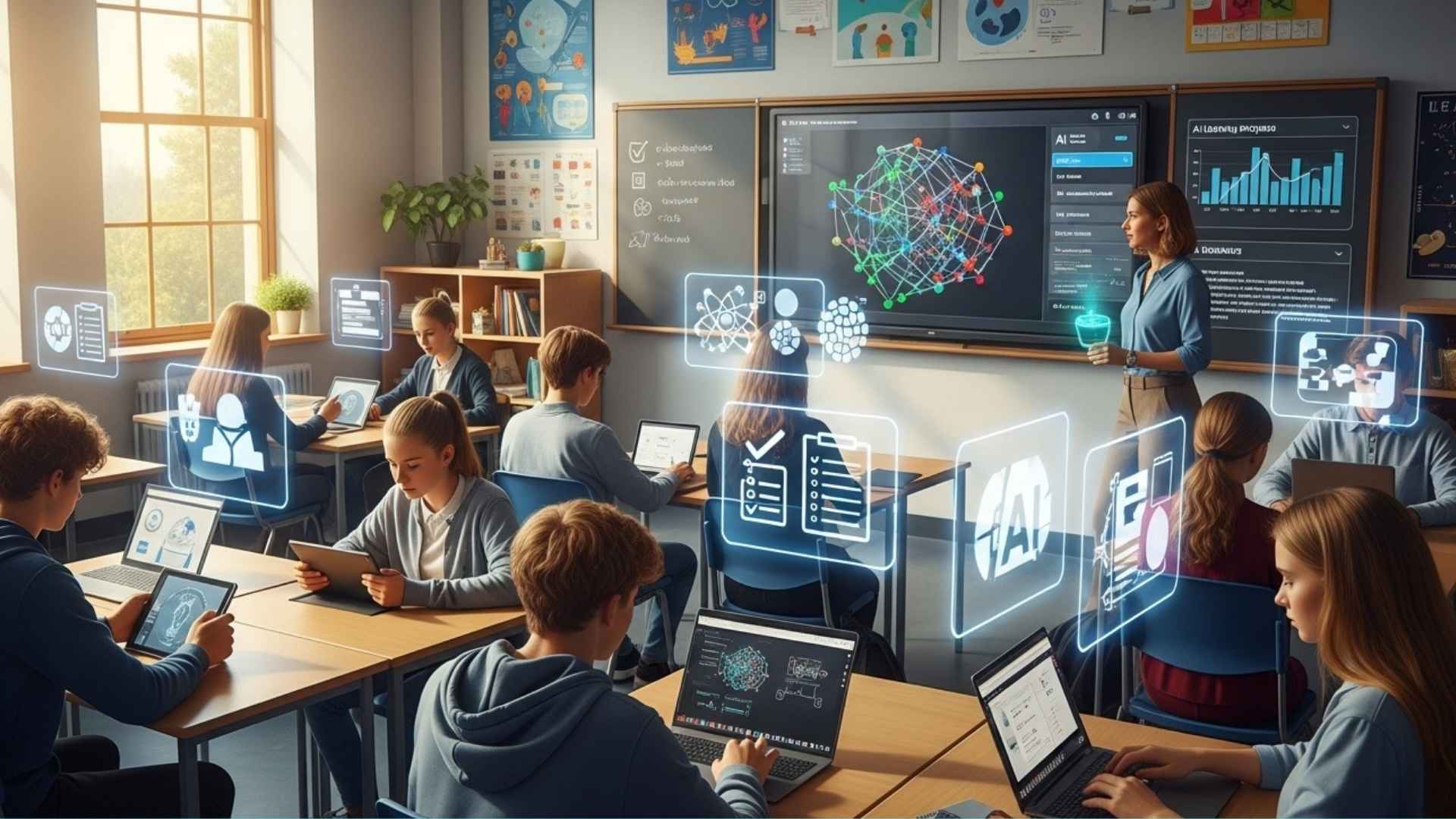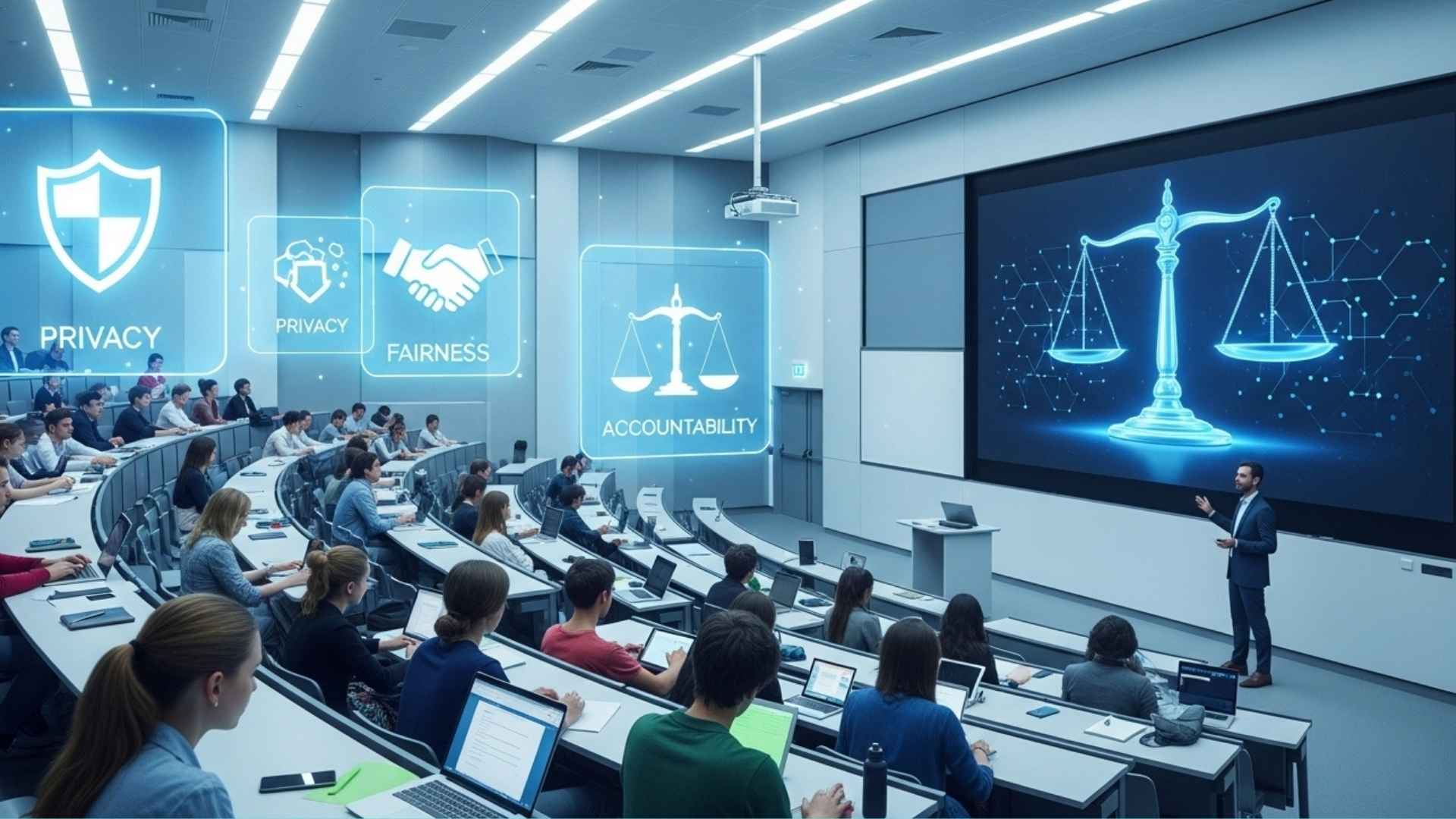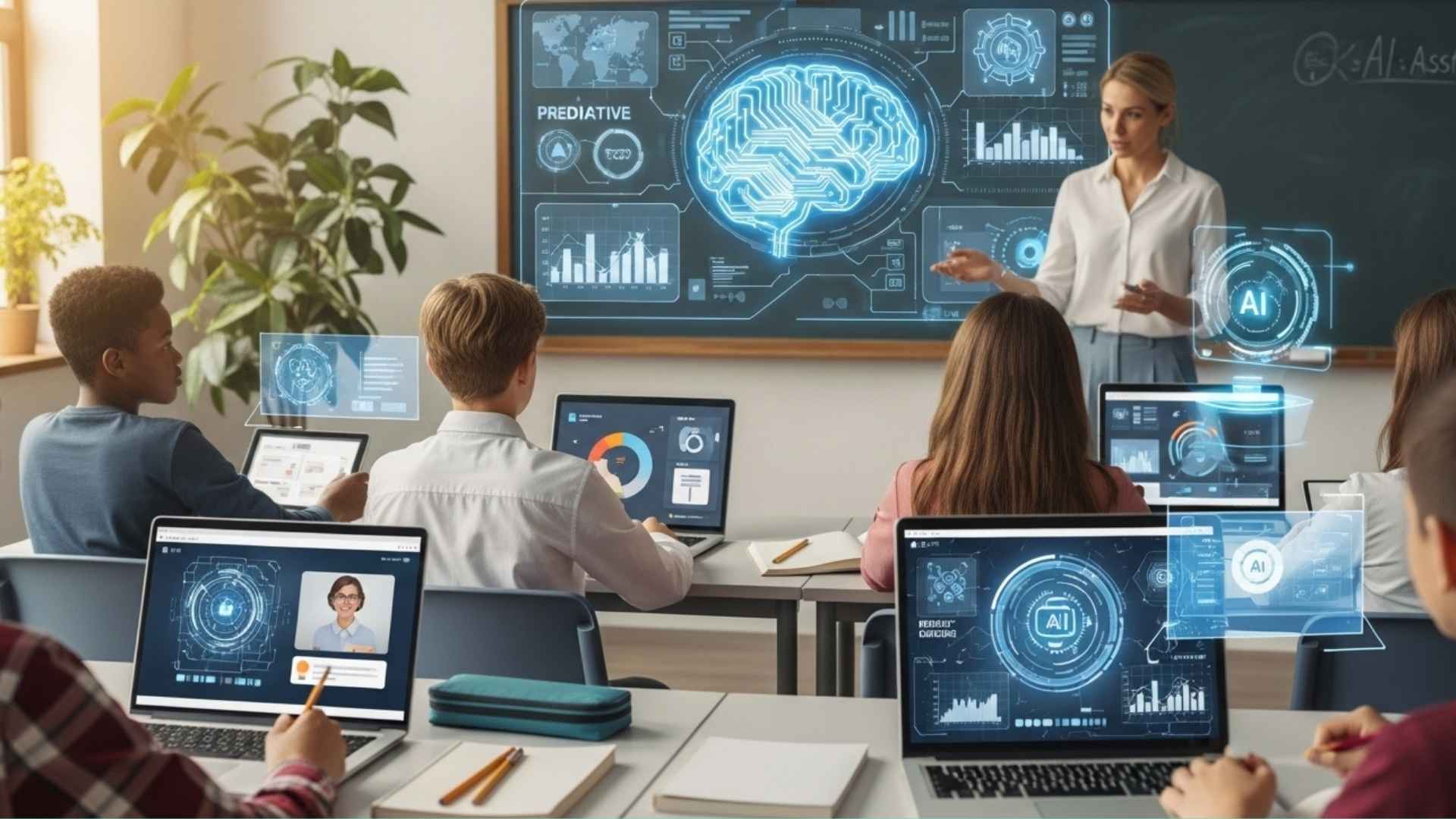When you think of artificial intelligence (AI), what’s the first thing that comes to mind? ChatGPT? Or AI assistants like Siri and Alexa? AI is much more than just these examples. You may be using AI every day or even noticing that it’s having an impact.
We’re living in an era of rapid growth in a type of AI called generative AI. This type of AI is described as “creating original text, images, video, audio, or software code in response to user commands or requests.”
Experts predict that the AI market could reach $826.80 billion by 2030, growing at more than 28 percent annually. Most of the funding for AI is going to generative AI (like ChatGPT or Google Gemini), and OpenAI, the creator of ChatGPT, was the most funded company in 2024. This means that AI isn’t going anywhere, and it’s only going to get better in the next few years.
From your smartphone to your doctor’s office, AI is all around you, right down to your classroom. Let’s take a look at how AI is being used in education.
1. Understanding the Uses of AI in Higher Education
Artificial intelligence (AI) is increasingly being integrated into the education sector. As generative tools become more advanced, it is expected that AI will become more widespread in education.
While AI may raise concerns about academic integrity, it also has the potential to support student learning. When used ethically, AI can be a valuable resource for students.
2. How Students Use AI
Schools are still deciding how to use artificial intelligence (AI) in the classroom and how to teach it.
New technologies are also opening up new avenues for academic dishonesty. Turnitin’s AI intelligence tool found that about 10 percent of student assignments use AI, with the vast majority of assignments generated by AI.
Instead of using AI to write essays or find answers to problems, it’s recommended that AI be used to help students better understand difficult topics.
In addition to helping students understand difficult topics, AI tools can also help students with disabilities. Here are some examples:
- Computer-generated voices can read passages aloud to students who are blind or have difficulty reading.
- Word-prediction programs can help students with poor spelling by predicting which word they are trying to write, even if they misspell it.
- Generative AI can help students with learning disabilities understand how to solve math and logic problems.
This technology isn’t just for students with disabilities. For example, an app you might have on your phone, popular language learning app Duolingo uses AI to provide personalized lessons to over 100 million users. It also uses AI to give learners personalized feedback on why they’re making mistakes and to allow them to speak in the language they’re learning.
3. Top AI Tools for High School Students
Here are some of the most popular AI tools among students:
- ChatGPT – A tool for research and problem-solving.
- Grammarly – A grammar and spelling checker.
- Notion – A productivity and note-taking tool.
- Google Gemini – A research tool.
- Copyscape – A plagiarism detection tool.
- Otter.ai – A speech-to-text tool.
- Dall-E – A digital image creation tool.
- Semantic Scholar – A tool for researching scientific literature.
These tools are designed to complement, not replace, teaching methods. They can help with tasks like research, writing, and speech-to-text transcribing. These tools are most effective when used as a support rather than a replacement for your own efforts.
It’s not just students who are using AI in schools. Let’s continue to look at how teachers and administrators are using this technology.
4. AI for Teachers
One of the most common ways that teachers use AI is through tools that detect assignments created with AI. These tools use artificial intelligence (AI) to detect whether students are using AI or not.
There are a variety of applications for teachers to use this technology, and the benefits are as follows:
- Save time
- Be more self-aware
- Make data-driven decisions
- Make it easier for students
Teachers can use AI to gamify fun activities, create visuals to make presentations and lessons more engaging, or convert text to audio to help students who cannot read.
However, when technology is used too much in the classroom, the learning experience can become less social. Social engagement is an important part of education. Therefore, teachers need to strike a balance between interacting with their students in person and using technology.
Also, there are concerns about student data privacy. School administrators and teachers should consider the use of technology to protect students’ personal information, as there is always the risk of a data breach.
AI tools are still new, and teachers need training to use these tools responsibly in the classroom. There are a variety of online courses available to help teachers learn these tools.
5. The Future of AI in Education
As new technologies emerge, implementation can be challenging. However, the World Economic Forum has outlined four potential uses of AI in education. These are the ones we expect to see in the near future.
- Supporting the role of teachers
- Improving decision-making in education
- Supporting digital literacy with AI
- Personalizing learning styles and experiences
These are the things that AI will transform the way we teach. It will make teachers’ jobs easier and reduce the stress of repetitive tasks. AI can also help us better measure student learning and progress, which can help us make better decisions.
Students will also become more familiar with these tools and understand how to improve their learning. Ultimately, learning will be a customized experience that matches the needs and learning styles of students.
Additionally, students who learn and use AI responsibly will be prepared for the workplace of the future. They will enter the workforce with knowledge and experience with the tools used by experts in various fields.
6. Final Thoughts
Currently, most people confuse AI with generative AI tools like ChatGPT. However, artificial intelligence (AI) is used every day in the form of search engines, Alexa or Siri.
It is important to consider the ethical concerns that may arise when using generative AI in schools. Students should use technology as a tool to support their learning.
Relying on technology to complete tasks can be a barrier to developing critical thinking skills and maintaining academic integrity. However, generative AI and other AI technologies can be used as tools to support education and deepen understanding. So if you are using AI tools to support your learning, you should carefully review your school’s AI policy.
Also Read: AI in Education: The Future of Learning
AI is not going away. So now is a great time for schools to learn about this technology and understand how to use it responsibly in real-world situations.




